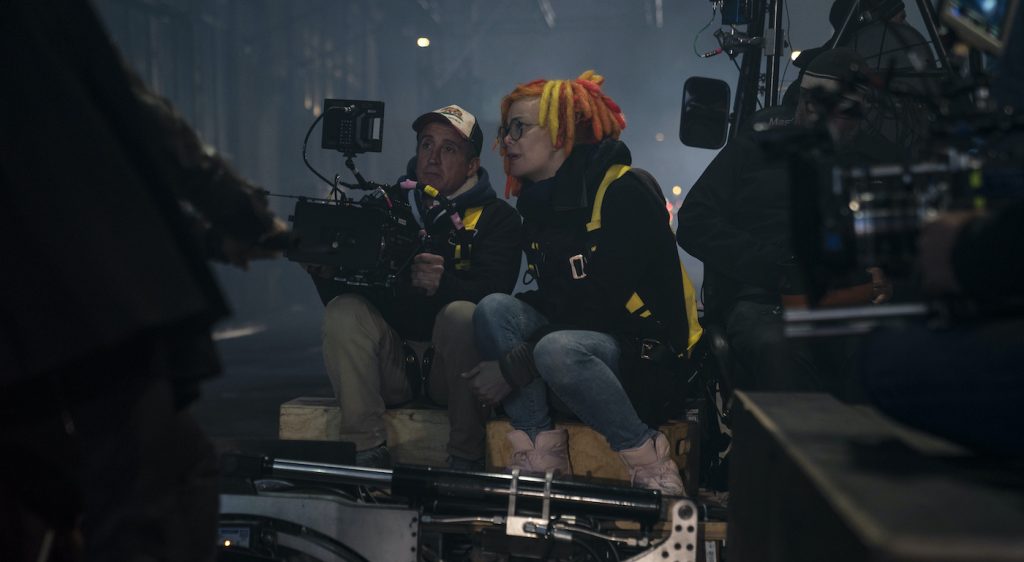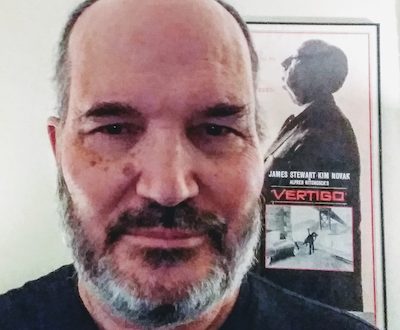“The Matrix Resurrections” Cinematographer Daniele Massaccesi on His Leap of Faith
“And then Covid started.” It’s hard to keep track of how many stories begin this way now – this correspondent has even written about it in the context of other productions, on this very site.
In this instance, it’s the tale of how Daniele Massaccesi became one of the two credited cinematographers on The Matrix Resurrections. A veteran of previous Wachowski sister productions, like Cloud Atlas, Massaccesi has a sterling reputation as a camera operator (to the point where, after he finished operating on House of Gucci, Ridley Scott pointed at him and insisted he’d to return in the same capacity for the director’s next production).
The plan for this epic, decidedly meta Matrix follow-up originally called for John Toll to shoot the film, while Massaccesi operated. Toll, who won back-to-back Oscars for Legends of the Fall and Braveheart, is himself a Wachowski veteran, having shot Cloud Atlas as well as their Netflix series Sense8.
Toll even started the film in San Francisco, in January of 2020, where most of the first and third acts are set (if indeed large swathes of Matrix stories can be truly said to set “in” tangible locations). “Then,” as Massaccesi recounts, “we traveled to Berlin to finish the schedule – and then Covid started. And then, in May, we started organizing the movie again – but John decided not to finish it.”

So director Lana Wachowski – for the first time undertaking a Matrix installment without her sibling – asked “what about if Daniele finishes it?”
Which proved to be not only an elegant solution, resulting in two credited DPs in the titles, but something that kept Massaccesi quite busy, as he still continued to operate.
“At the beginning,” he asked himself “will I be able to do it?” The answer turned out to be a fairly resounding “yes.” “Most of the time,” he says, “I was pretty much ready. I only needed to do small adjustments.”
Part of that adjusting was to a digital-era update on a kind of Robert Altman-like spontaneity. Not in ad-libbed lines, but in terms of camera and character movements. Massaccesi stayed “on the Steadicam,” while the director followed “behind me, looking at the monitor, whispering in my ear.” And not just for single scenes, but most of the film. “In a way (it) was a very efficient way of filming – we were able to catch everything we wanted. Because Lana was on set, she was able to adjust.”
This particular moveable feast was made up of a RED Ranger with Monstro sensor, Panavision Panaspeed lenses, Zeiss zooms, and gear on the back of Massaccesi’s vest that Wachowski could use as she followed along – namely, a zoom control “so she could adjust it on the fly,” and an iPad, to serve as a monitor.
“Sometimes,” he allows, “we were not moving that much, when you do close-ups and things.” Conversely, though, “sometimes you start rolling, and sometimes you get an entire scene with only one click, basically.” i.e., the vaunted single take.
As a general reference for the look of this film, Wachowski told him to make a point of not looking at the first one. “This is a different story,” she told him. There was also the matter of film technology having changed in the meantime: “Originally, The Matrix was green, since that was the color of all those 90’s-era computer pixels,” Massaccesi says. “Now computers are not green anymore.”
And while this may have led to reimagined Matrix-created (or induced) “realities” that looked “more real than the real reality,” there was another reason, connected to that same hue. “So we could use the Steadicam. Lana doesn’t like to use green screen anymore. She’d rather do everything real, on set.”
Granted, this isn’t always possible in a story where buildings undulate and people fly, but ingenious camera techniques were deployed more often than one might realize. In one sequence (minor spoilers ahead!), set in a motorcycle shop, two characters are moving at different speeds. One is moving very slowly, almost painfully so, and one is very fast, to the detriment of the slow one.
“We had a 3-D rig, with one camera shooting 8 frames a second, one shooting 120 frames,” Massaccesi says about achieving the effect. In the background, everything was “happening at normal speed,” but with each camera trained on a different character, each “had completely different looks,” or at least movement speeds, making it easier to “combine the different cameras” during the VFX stage.
Even without shooting at different speeds, or with a rig, there were usually two Steadicams on set, a B camera in addition to the one Massaccesi operated, whose feed Wachowski could also view on the iPad on his back.
This proved such an efficient way to work that while the original schedule was for around 112 days of shooting, the team wrapped up sooner. “We finished in 88 days. Warner Brothers pulled the movie to release earlier,” Massaccesi says.
Massaccesi got to experience the anticipation for this long-awaited return to the Matrix first-hand. When he returned to Italy, he found a lot of people eagerly anticipating its release. “Everybody was asking me about it.” It was released to critical acclaim, proving the long-tenured filmmaker but first-time cinematographer had hit his mark.
“To be honest, it was fun,” Massaccesi says. And (mild spoiler alert redux!) even after all the surprises Keanu Reeves’ Neo is subjected to in the course of the film, his character might ultimately agree, as well.
The Matrix Resurrections is in theaters and on HBO Max now.
For more on The Matrix Resurrections, check out these stories:
“The Matrix Resurrections” VFX Supervisor Dan Glass Takes The Red Pill
“The Matrix Resurrections” Early Reactions: A Bold, Irreverent, Vividly Personal Head Trip
Red Pill Time: “The Matrix Resurrections” Reveals Tons of New Images
Featured image: Caption: JESSICA HENWICK as Bugs in Warner Bros. Pictures, Village Roadshow Pictures and Venus Castina Productions’ “THE MATRIX RESURRECTIONS,” a Warner Bros. Pictures release. Photo Credit: Courtesy of Warner Bros. Pictures



